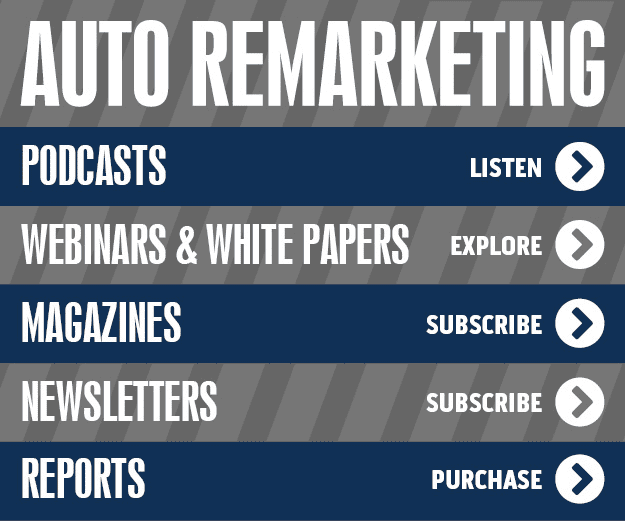PPG: Silver Still World’s Top Choice for Car Color

By subscribing, you agree to receive communications from Auto Remarketing and our partners in accordance with our Privacy Policy. We may share your information with select partners and sponsors who may contact you about their products and services. You may unsubscribe at any time.
TROY, Mich. –
Silver’s streak of ranking as the world’s most popular choice for vehicle hue has reached 10 years, according to PPG Industries. The last time silver was this common among cars was 1990, according to the company.
Silver, gray and charcoal led the way for North America, as well, as they commanded a 31-percent share, climbing from 25 percent and 20 percent in 2009 and 2008, respectively, PPG noted.
Tying for the No. 2 spot in North America were black and white, each of which garnered 18 percent of the market. Coming in at No. 3 was red, which represented 11 percent, followed by blue (10 percent).
Next up were naturals — which consist of colors such as browns, tans, golds, oranges and yellows. This category grabbed 8 percent of the market. Placing at the bottom was green (4 percent).
Interestingly enough, green topped the North American list in 1994 when it composed 21 percent of the market. The same year, silver was at 8 percent.
“There’s clearly been a significant strengthening of silver’s popularity in recent years,” stated Jane Harrington, PPG manager of color styling and automotive coatings.
Subscribe to Auto Remarketing to stay informed and stay ahead.
By subscribing, you agree to receive communications from Auto Remarketing and our partners in accordance with our Privacy Policy. We may share your information with select partners and sponsors who may contact you about their products and services. You may unsubscribe at any time.
“And, with more than two-thirds of cars in North America being black, silver or white, one might be inclined to believe that vibrant colors don’t exist in automobiles anymore,” she added. “But that’s not true. The fact is that these shades continue to evolve. New advances in pigments and technologies are giving today’s vehicles different textural appearances and iridescent sparkle.”
Moving overseas, European’s most common colors were silver and charcoal, which generated a 32-percent share. Black was next at 24 percent, with white in third (20 percent). Blue was fourth (10 percent), with red (9 percent) close behind. Continuing on, naturals claimed 5 percent, while green stood at 1 percent. Other/niche colors came in at 1 percent, rounding out the list.
Over to the Asia/Pacific region, claiming the top spot was silver and charcoal (33 percent). White was second at 21 percent, black was third at 19 percent and No. 4 was blue, coming in at 8 percent.
Naturals were fifth (6 percent), followed by other/niche colors (4 percent) and green, which rounded out the list at 2 percent.
“Color is an important component of how today’s carmakers can define and differentiate a vehicle or brand in the marketplace,” Harrington stated.
“The palette of colors being developed for the automotive market is clearly being influenced by culture, nature, fashion, movies, media, electronics and many consumer products,” she continued.
Continuing on, PPG also shared some of the future vehicle color possibilities for model years 2013 and 2014. Among the 66 new exterior colors and five interior colors shared at “InSite,” this year’s Automotive Color Trend Show, were as follows, with PPG descriptions in quotes:
—Denim, which officials said was “like the name, a classic true blue with a high effect sparkle.”
—Cognac, described as “a rich coppery warm brown with an iridescent highlight.”
—Silky Silver, said to be “a liquid silver look with a slight bronze cast.”
—Moonshine Blue, something PPG noted as “a pale silvery blue like the reflection of the moon on a lake.”
—Wicked, described as “a sinister green color inspired by couture fashion.”
PPG also noted that it boasts five proprietary interior coatings that OEMs can purchase and use to make inside of the vehicle have the “look and feel of anodized aluminum.”
“Anodized aluminum has been a trend in the automotive aftermarket for several years,” noted Vala Mohr, PPG manager of interior color styling. “Our technology now brings that same luxurious look to the original equipment market giving automotive manufacturers another tool with which to enhance their brands.”
Also showcased were new coatings technologies for adding specials effects to the outside of the vehicle.
“New glass flake technology utilizes titanium dioxide-coated glass flakes that appear as a smooth surface and add an extreme sparkle and brightness,” stated Jerry Koenigsmark, PPG manager of color design, North America automotive coatings.
“Also, new mica technology has helped increase the chroma and brilliancy from standard micas currently in use,” he added. “This allows for increased brilliance in colors and greater highlight effects.”
As further explained by Koenigsmark, reds and oranges can have more variety thanks to the new iron oxide coated aluminum pigments.


